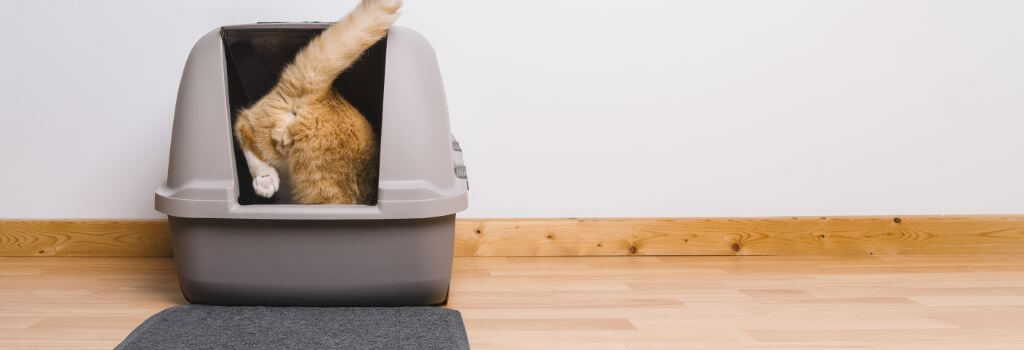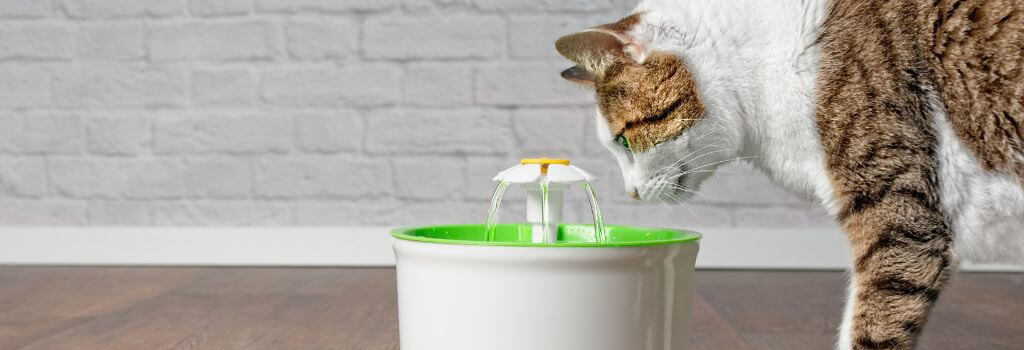Constipation might not be the most glamorous topic, but it’s a bigger deal for cats than you might think. Difficulty with bowel movements can lead to serious discomfort—or even a medical emergency for our felines.
Since most cat parents don’t keep close tabs on their cat’s daily bathroom habits, constipation can easily go unnoticed. If you are a cat owner, it’s important to know the signs, understand the causes, and recognize when it’s time to call your veterinarian.
What Is Constipation?
Constipation in cats occurs when there is an excessive buildup of feces in the colon, leading to difficulty passing stools. This condition can cause a decrease in the frequency of bowel movements or, in some cases, a complete inability to defecate.
Cats should typically have a complete bowel movement every 24 to 36 hours. Their stool should be well-formed. While every cat's bathroom habits may differ, it is generally accepted that a cat going more than 48 hours without a bowel movement indicates an issue that needs medical attention.
Untreated constipation can lead to serious health complications that negatively affect a cat's well-being and quality of life. As constipation progresses, it can cause appetite loss and weight reduction, as affected cats often experience abdominal swelling, making eating painful. If the stool remains in the intestinal tract for too long, it can result toxin build up and cause damage to the intestines and rectum including irritation, bleeding, and even prolapse.
Constipation vs. Megacolon
In some cases constipation in cats can be caused by megacolon, a condition in which the colon stretches and loses its ability to contract properly, leading to further complications with bowel movements. Since megacolon results in a weakened colon that fails to effectively pass stool, it can contribute to chronic constipation and other intestinal and rectal health problems.

What Causes Constipation In Cats?
Constipation can affect cats of any breed and of any age, though it is most commonly seen in middle-aged to senior cats. Some studies have found that male cats with Domestic Shorthair, Domestic Longhair, or Siamese lineages may also experience higher rates of constipation.
Outside of breed and gender considerations, factors such as health, age, and lifestyle can also make cats more susceptible to constipation. For example, older cats are considered a higher-risk group due to their changing diet, reduced mobility, dehydration, and underlying health conditions that contribute to constipation.
Other factors that may lead to constipation, or even chronic constipation in cats, include:
- Poor nutrition or low-fiber diets
- Dehydration
- Stress
- Lack of exercise
- Obesity
- Arthritis
- Food allergies
- Cancer
- Intestinal Blockages from tumors, masses, foreign objects, and hairballs
- Hyperthyroidism
- Diabetes
- Chronic Kidney Disease
- Previous instances of constipation
How Can I Tell If My Cat Is Constipated?
One of the biggest challenges of owning a cat is that they are excellent at masking pain and discomfort, making difficult for owners to notice when their cat is unwell. However, just like with many other illnesses, there are a few signs that can alert cat owners that something might be wrong with their furry companion. It's important not to confuse an inability to urinate (which is life-threatening) with constipation!
Signs that a cat may be constipated include:
- Avoiding the litter box or designated bathroom spaces, leaving small pieces of stool elsewhere while still using the litter box for urination.
- Straining, crying, or vocalizing in the litter box during defecation.
- Entering and exiting the litter box multiple times without a bowel movement despite trying.
- Not being able to poop at all (cats should have a bowel movement every day).
- Small pieces of stool in litter box
Is Constipation in Cats an Emergency?
Constipation in cats can be either a mild or severe condition, and whether it's an emergency depends on the severity and how long the cat has been constipated.
Mild cases of constipation are most commonly caused by low-fiber diets, dehydration, or obstructions from hairballs. In these cases, cats may not be completely unable to defecate but may strain, produce small, dry stools, or have less frequent bowel movements. Mild cases of constipation can be difficult for some owners to detect unless they're watching closely, as many cats may continue eating, drinking, and acting normally. The most noticeable signs are typically physical discomfort and lack of feces in the litter box.
Severe constipation, also known as obstipation, is much more serious and requires immediate veterinary attention. It occurs when feces become completely impacted in the colon, preventing normal function and leading to little or no stool passage. Severe constipation is often linked to chronic conditions such as megacolon, blockages (due to foreign objects, tumors, or strictures), or systemic illnesses like kidney disease or diabetes.
You should see your veterinarian if:
- Your cat hasn't defecated in more than 48 hours.
- They're straining or crying in pain.
- They're vomiting, lethargic, or refusing to eat.
- You notice blood in the stool or a swollen abdomen.
Treating Constipation in Cats
The treatment for constipation in cats is determined by the severity of the constipation, as well as if veterinary intervention is necessary. Some treatments, like increasing the amount of fiber in your cat's diet or encouraging them to drink more water, are straightforward, while others will require veterinary supervision.
Some common treatments for constipation in cats include:
- Dietary changes: Switching to a high-fiber or prescription diet based on your veterinarian's recommendations.
- Hydration: Increasing water intake at home or administering subcutaneous fluids at the vet.
- Medications: Stool softeners, laxatives, or prokinetics (medications that stimulate the digestive tract). However, these should only be used with approval from a veterinarian.
- Enemas: Performed by a veterinarian to clear impacted stool.
- Surgery: In extreme cases, surgical intervention may be required, especially for conditions like megacolon or severe impaction.

How You Can Help a Constipated Cat at Home
How much you can safely help your cat with constipation at home depends on the severity of the condition. Here are some specific suggestions to help your cat get things moving again if they are experiencing mild constipation.
One of the most effective ways to help a constipated cat is to increase their water intake. This can be done through direct drinking or incorporating more liquid into their food. Wet food naturally contains a higher percentage of water than dry food, which can help to hydrate the cat and soften their stool. If your cat prefers dry food, you can also add water directly to their kibble to their water intake.
When it comes to food, adding a small amount of plain canned pumpkin to their meal can also help. Whether your cat is eating wet or dry food. Pumpkin is a natural source of fiber, that can help to bulk up the stool and make it easier to pass. However, it's important to only use plain canned pumpkin, as any variety with spices can be harmful to cats and potentially worsen their stomach issues.
While it may take a little convincing, try to keep your cat active and encourage them to play. Physical activity helps stimulate their bowel by increasing blood flow and muscle contractions, promoting regular bowel movements.
While these home remedies can provide relief for some cats, always consult your veterinarian before trying them. A simple phone call to the vet's office can help ensure the remedies are safe and appropriate for your cat's specific health needs.
What Not to Do
When our cats are struggling with constipation, it’s only natural to want to help them find relief as quickly as possible. But before reaching into your own medicine cabinet, think twice — human laxatives should never be given to pets unless specifically instructed by a veterinarian. What works for us can be dangerous for them, so it’s always best to consult your veterinarian for a safe and effective solution.
Many human medications are toxic and potentially fatal to animals, so giving anything without veterinary approval can be risky. Instead, work with your veterinarian to determine an appropriate treatment that is approved for use in cats, leading to increased safety and better treatment outcomes.
Enemas for cats are something best left to the professionals at your local veterinarian's office. Enemas can be life threatening for cats if administered incorrectly.
Preventing Cat Constipation
To help prevent cases of constipation in your cat, you can start by:
- Ensuring your cat stays well-hydrated.
- Check and scoop litter boxes daily.
- Feeding a balanced diet with appropriate fiber levels.
- Keeping them at a healthy weight.
- Regular playtime and exercise to encourage movement.
- Routine grooming, especially for long-haired cats, to minimize hairballs.
Even if you're doing everything right, constipation can still occur in cats from time to time. If you do notice any concerning changes in your cat's bowel movements or bathroom habits, it's always a good idea to get in touch with your veterinarian.
By working with your veterinarian and addressing any signs of discomfort or straining early on, you can help prevent worsening constipation, costly vet visits, and potentially invasive procedures.
If you have questions and you'd like to reach out to us, you can call us directly at (218) 692-4400, or you can email us at [email protected]. Don't forget to follow us on social media Facebook, Instagram.

